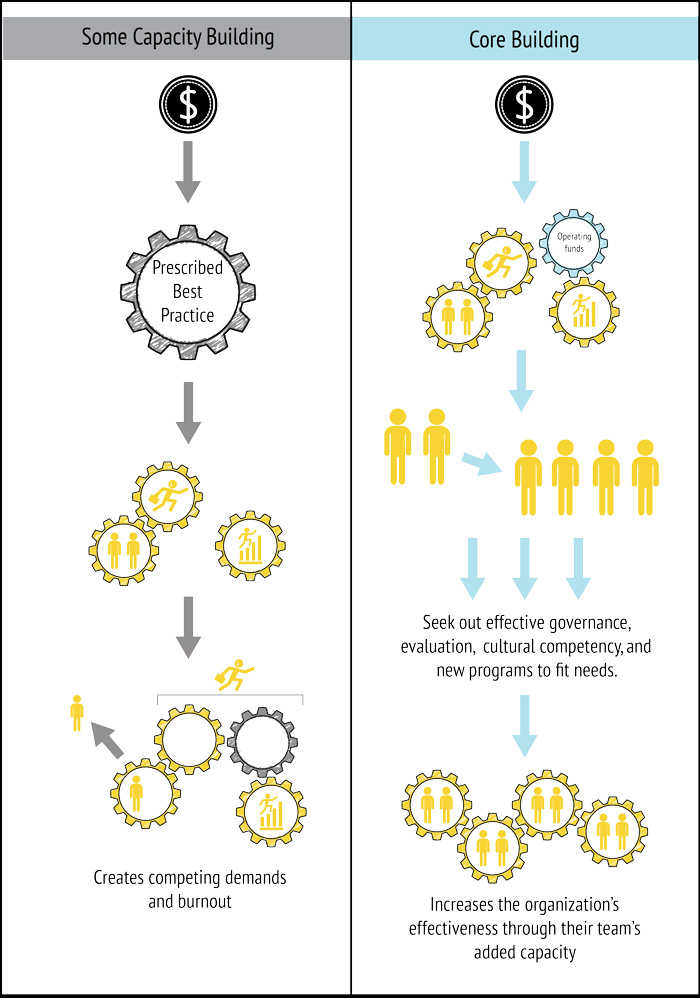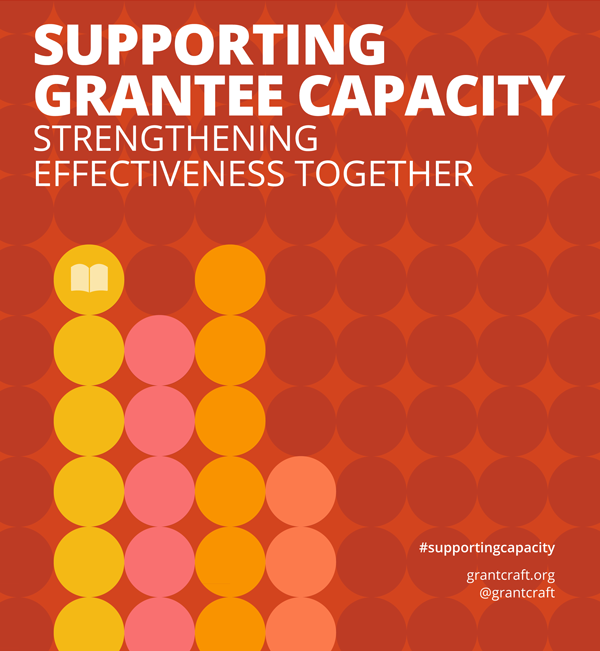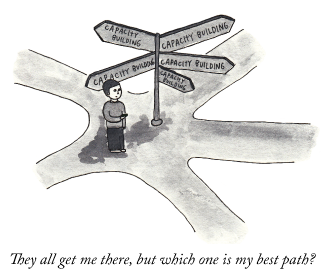Bringing Capacity Building to the Core
Each nonprofit organization has its unique strengths and weaknesses similar to the communities they are serving. The current culture of capacity building funding often includes funding of specific frameworks (new governance models, program structures, or evaluation methodology, for example). Funders sometimes ask organizations to take on prescribed models, or only give enough funds to work on one function of their organization. Yes, organizations could choose not to access funding if they don’t need that specific fix. But, they don’t always have that option when fighting to expand their limited resources. One solution to this current capacity building challenge is to borrow from “asset-based community development” and do something I like to call “core building”.
“Asset-based community development” [http://www.abcdinstitute.org/] is a methodology that targets the strengths of a community to support culture shifts or new community systems. Each community comes with its own set of personalities, established systems, and long-standing community traditions. By focusing on each community’s unique assets, leaders can energize residents and constituents by starting with what they are best at and building on those strengths.
The core of a nonprofit is its people: volunteers and staff that run programs, raise money, and manage administrative functions. “Core building” focuses funding on a nonprofit’s greatest assets, its people. When funders focus funding in this way, organizations become more effective because the individuals within organizations become more effective.
In Grand Rapids, Michigan, a small group of funders has come together to develop the Nonprofit Technical Assistance Fund [nptafund.org]. The fund allows organizations to apply for a grant up to $10,000 to bring in a consultant, one the nonprofit chooses and the NPTA Fund confirms as a good fit, to do any type of capacity building the organization needs. In some cases, organizations have been funded for staffing plans or volunteer management plans, which help them build out and support their core work. The model has been very successful, because organizations meet their specific needs and get more intimate support from a consultant to help them through the work.
The diagram below shows the chasm that some capacity building can create in organizations, leaving staff members managing competing demands and losing staff and volunteers to burnout. In core building, however, general operating funds allow organizations to keep and add additional staff and volunteers. Staff that are energized and equipped with the right tools make better decisions and have more opportunity to seek out best practices in their work.

Why does Core Building work?
Research on the positive effects of general operating support has been done, see these articles here, here, here, and here. There are also articles on how providing support for people can positively influence mission achievement, see them here and here. Core building asks organizations to look at a combination of these theories and develop people in the sector.
There are many benefits to organizations receiving general operating support. To get the most impact out of the funds, funders should suggest organizations using the funds for implementing effective business practices and focusing on their greatest assets: their people. If nonprofits see the benefit of using the funds in this way and are equipped with the right tools, they will see the following benefits:
- Staff become energized and more effective, because they are gaining control over their learning, programs, and management structures.
- Organizations are able to use volunteer and monetary resources directly for strategic goals.
- Benefits and new opportunities empower leaders at all levels of organizations.
- Decreased turnover of effective staff and increased hiring capacity, which saves the organization money and increases funding opportunities.
- Staff have time and space to work on effective programs, as well as stronger institutional knowledge and extra time to spend on program improvements.
What does Core Building take?
To make this type of funding most effective, organizations need support to implement talent management tools and coaching. Core building also requires:
- Funders willing to provide holistic operational funding to organizations to allow them to hire, give raises, provide professional development, and implement sound performance assessment practices.
- Coaching for leaders and managers on business planning and effective implementation practices.
- Empowering leaders at all levels of the organization, to build succession and sustainability for organizations.
This blog just skims the surface of the discussion of what core building can do for nonprofit organizations. Discussions about broader operational funding and funding directed at staff is growing and it needs to keep increasing. What do you think about core building? Is it a viable direction funders could take?




